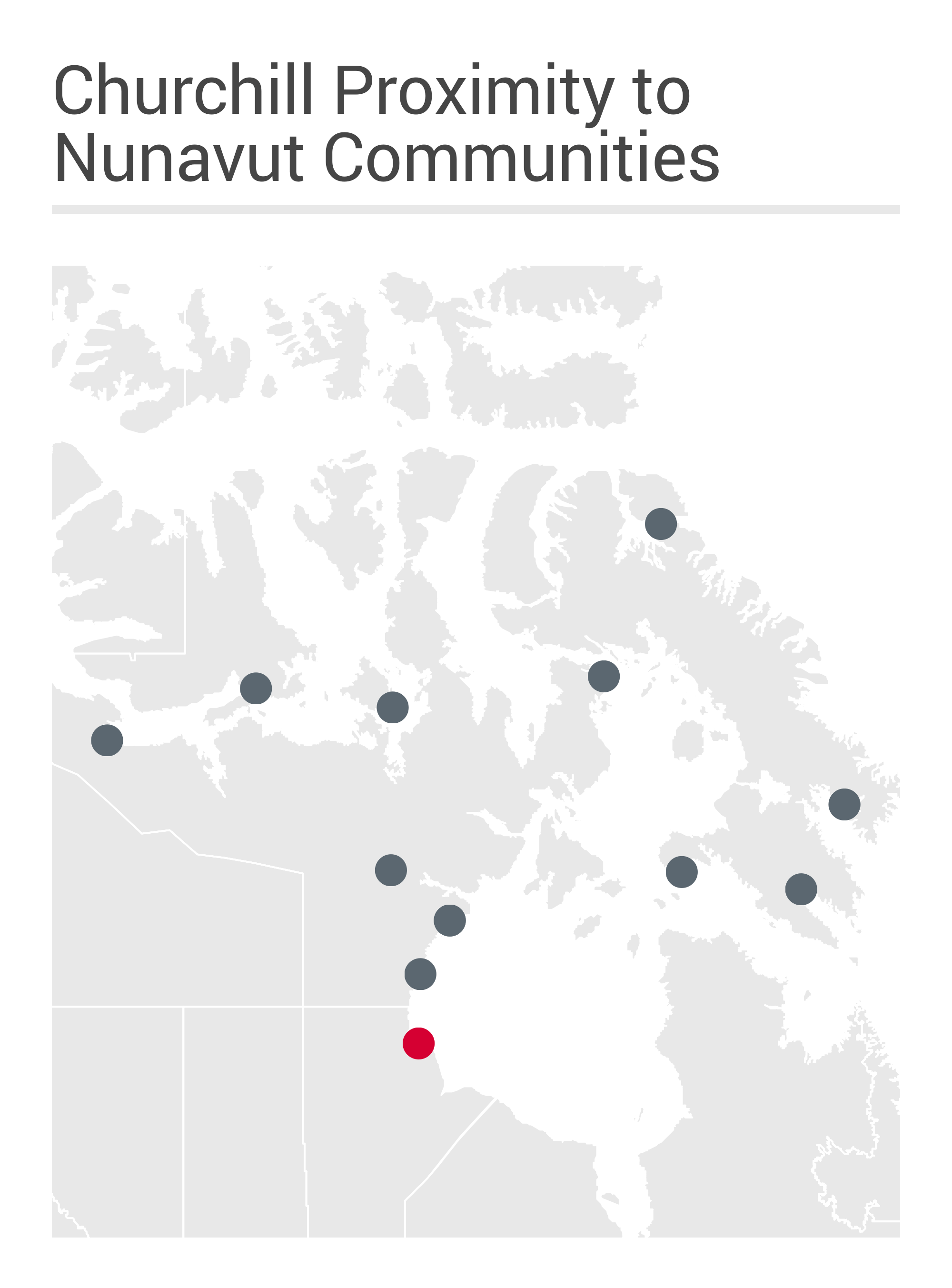– Photo credit: Ansgar Walk
Churchill’s uncertain future—Part 2
When the Port of Churchill ceased operations on Aug. 8, it signaled the end of Canada’s Arctic shipping era. Now, the community must find a way to stay viable.
The community of Churchill occupies a place of importance for Manitoba and for the North. There are opportunities for the community to survive and thrive, even after the port closing. Two key areas are: building on tourism in the region, and becoming the gateway to Canada’s Arctic north through trade and transportation routes.
The Polar Bear Capital of the World
Canada’s North offers myriad experiences that are popular with tourists. Many of these experiences can be found in Churchill. Calling itself the “Polar Bear Capital of the World” and the “Beluga Capital of the World,” Churchill offers a rare opportunity to see Arctic animals through polar bear and whale watching tours and activities.
Close to 450,000 people visit northern Manitoba each year, and many of those people find themselves in Churchill. Northern tourism in Manitoba generates $102 million annually, and results in $21 million in direct tax revenue. Most of the people who visit northern Manitoba are Canadians, typically from Québec, Saskatchewan, or other parts of Manitoba. About 25,000 tourists come from the U.S. to northern Manitoba each year. These tourists are particularly important for the region, because they tend to stay longer and spend more money. U.S. tourists spend an average of more than $1,500 each per visit, whereas Manitobans on average spend $118 per visit.
Churchill, however, faces a number of tourism hurdles that may explain the relatively low numbers in the region. The most obvious problem is transportation. There are no roads connecting Churchill to the rest of Manitoba. The only way to get there is by air or rail, and neither option is wallet-friendly. A flight from Winnipeg to Churchill is typically several hundred dollars – and that does not include the costs to get to Winnipeg in the first place. VIA Rail offers passenger trains to Churchill twice a week. While a one-way rail trip costs about $200, it also takes two days.
Manitoba’s provincial government has taken notice of the potential for tourism in Churchill. On Aug. 29, Trade Minister Cliff Cullen announced a $3-million cash injection for Travel Manitoba to increase its marketing campaigns nationally and internationally. The province is also planning to spend several million dollars to construct a new marine observatory in Churchill. These funds are likely to help attract new visitors to Churchill, though the limited and expensive travel options may keep tourism numbers low.
Gateway to the North
Making Churchill Canada’s Arctic Gateway gained some traction in 2010, when it was the subject of a University of Winnipeg summit on northern Manitoba. Canada does not have a community that can be thought of as a gateway to the north – a place where food and goods can be transported to the territories, and a place to connect the territories to the rest of Canada. Churchill is a good option for this because of its location near some communities in Nunavut.
All communities in Nunavut indicated on the map have more than 1,000 people in them.
Transportation to most communities in the territories is typically difficult, because they are geographically isolated and lack of transportation infrastructure. Churchill has clear links to several of these communities, either by relative land proximity or connection by water. The Arctic Gateway discussions in 2010 suggested establishing a few communities with multi-modal facilities: Winnipeg, Churchill and Iqaluit. As Churchill sits between Winnipeg and Iqaluit, it could act as a mid-point for the two capitals.
Churchill’s Arctic shipping capabilities mean it has significant infrastructure needed to store and ship goods. This includes a fuel tank farm, more than 7,200 square metres (80,000 square feet) of storage space, and rail tracks for loading and unloading. These assets could be put to further use by shipping more to the North, instead of using them to ship overseas.
All-weather road from Nunavut through to the Trans-Canada Highway in Manitoba has been proposed as a way to make the Arctic Gateway more feasible. This would make transportation from Winnipeg to Churchill to Nunavut much more feasible. The inability to travel by road is a significant hindrance for growth in the North. However, there hasn’t been much road infrastructure in the North because of construction and maintenance problems caused by extremely cold weather. In 2010, the this road was thought to be more feasible because of warmer temperatures associated with climate change. Six years on, it would be worthwhile to reinvestigate the idea.
Churchill is an important community, both in and of itself, and as a potential link to other northern communities. If Churchill is to survive and thrive, it needs to build on existing strengths.
– Sarah Pittman is a research intern

